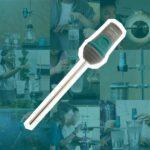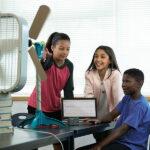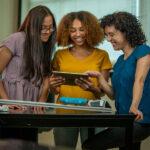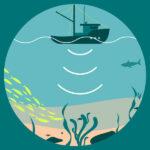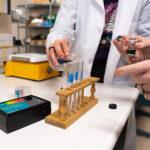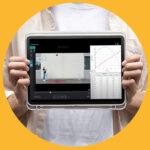
Sharing ideas and inspiration for engagement, inclusion, and excellence in STEM
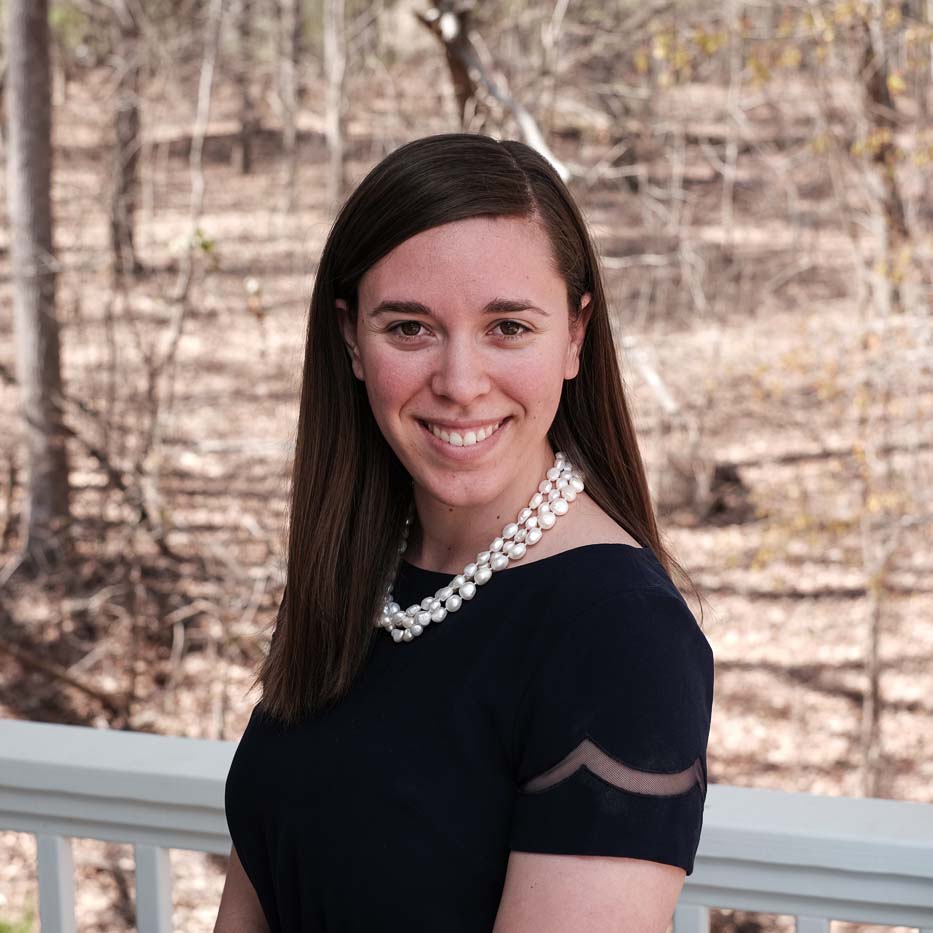
Alexandra Boyd teaches AP Physics at Apex Friendship High School in Apex, North Carolina. Last year, she won a 40th anniversary educator grant from Vernier, which included $1,000 in Vernier technology. We sat down with Boyd to discuss the impact of the grant on her and her students. The interview has been edited for length and clarity.
What did winning a Vernier 40th anniversary educator grant mean to you?
It meant a lot. I knew my department, not just my own classes, would benefit from it. Knowing that the grant would help the whole school made it that much more exciting when I got it.
What Vernier technology have you acquired as part of the grant?
I already had some Vernier equipment, so I knew how user-friendly it was. With the grant, I decided to get two LabQuest® 3 interfaces. I also got LabQuest Charge Stations because we already have multiple LabQuest 2 interfaces in my room, and I need to make sure they’re always charged so that they’re ready for my students to use—and that they’re ready for other teachers to use with their students.
How have you used this technology with your students?
I usually use LabQuest throughout the semester. Right now, I’m teaching AP Physics 1, and we just did a graph-matching activity. My students had motion sensors, and they had to view a graph and describe the motion that would’ve created that graph. Afterward, they had to re-create that motion in front of the motion sensor and make sure the LabQuest was showing the same position-time graph that they were provided earlier. That was their introduction to LabQuest.
Down the road, we will do some friction labs—looking at static and kinetic coefficients of friction and being able to use force sensors with the LabQuest interfaces. We’ll also do a lab activity where I have them use a Force Plate and push my car to collect data to figure out the mass of my car. That’s usually a pretty fun one!
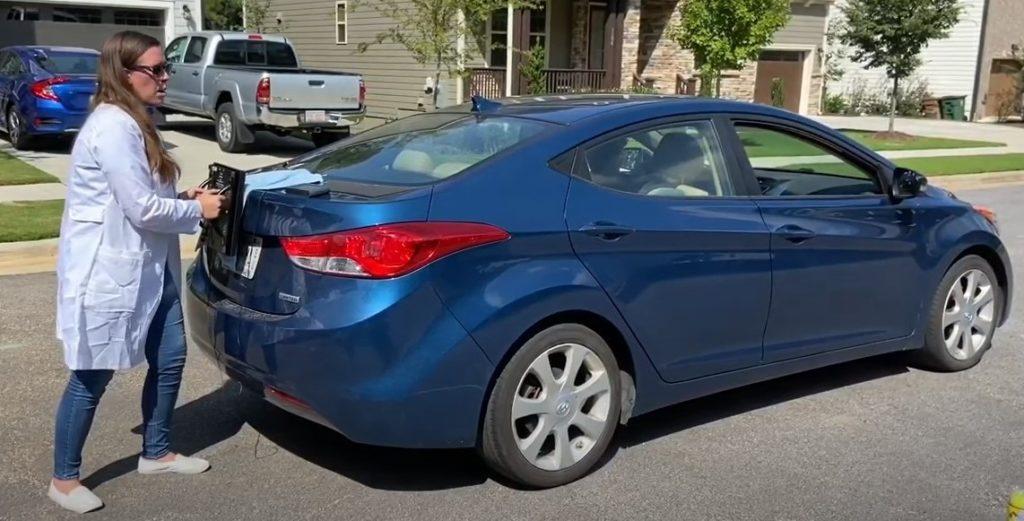
LabQuest is a really user-friendly interface, and my students are going to encounter it when they go off to college because the majority of them want to go into a STEM field. They’d be at a real disadvantage if they weren’t able to use college-level equipment in my class.
How has this Vernier technology improved STEM literacy and student engagement?
With LabQuest, students have the ability to highlight the graph on the interface itself and are able to look at averages, collect different sorts of data, and produce different types of graphs. Taken together, these things all help increase STEM literacy. And being able to see a position-, velocity-, and acceleration-time graph all on the same screen without getting bogged down with spreadsheets is great.
Just today, we were doing a data-collection activity. My students are not fluent in spreadsheets in general, so it would have been a very long, intensive process without LabQuest. But being able to look at the interface and easily see the data tables and graphs, as well as to be able to manipulate them right there—even if they hadn’t been introduced to LabQuest before, they pick up on it so quickly because of its functionality.
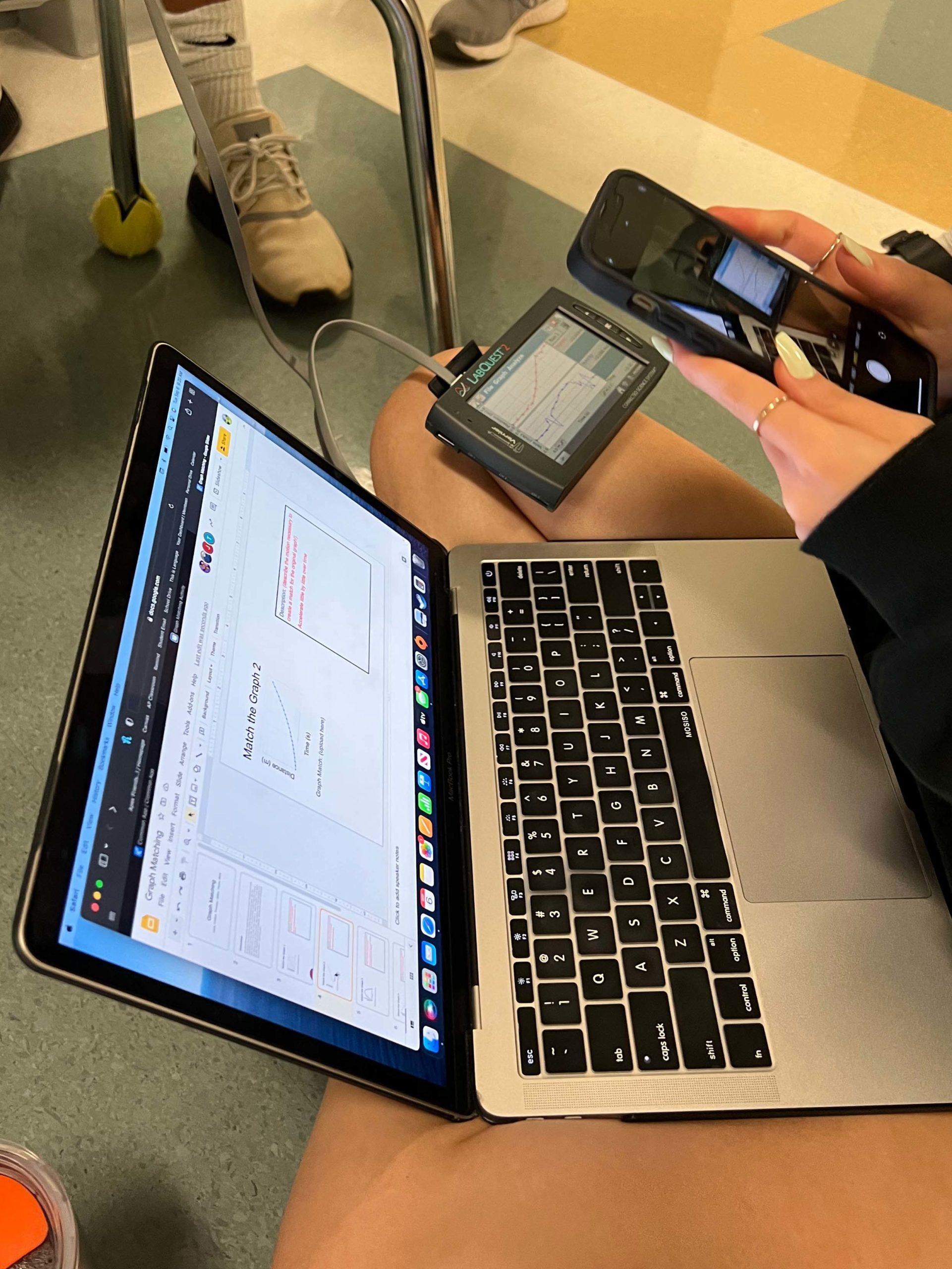
In regard to engagement, I feel like more students feel more involved in the activity because if you’re just writing things down or putting things into your computer, it’s not as group oriented. With LabQuest, they have to talk to one another and collaborate. And somebody might gravitate toward using the interface or being able to figure out the functionality of the different sensors. So, there’s that added role and the ability for some students to step up that they might not have had otherwise.
What are your goals for the rest of the school year?
The past few years have been so crazy; it’s really nice to be able to give my students that truly hands-on learning experience. The LabQuest interfaces, as well as the other Vernier probeware I had before winning the grant, make it that much easier to get them involved and invested in their learning—especially since, during the pandemic, so many of them took science and math classes that were online and weren’t as interactive. Being able to have more equipment that they can get their hands on and enjoy makes it a lot easier for them to be invested in their own learning.
Share this Article

Sign up for our newsletter
Stay in the loop! Beyond Measure delivers monthly updates on the latest news, ideas, and STEM resources from Vernier.

